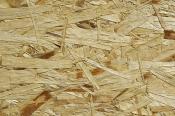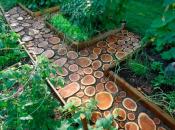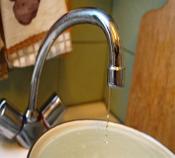Search
Login
Recommended
Slate wave, how to choose the right slate, useful tips
The appearance of new building materials does not mean at all that old, tested over decades suddenly lose their relevance. Take slate, for example. Among the variety of modern roofing materials, he found his niche and is still actively used in industrial construction and in the construction of private sector facilities.
Content:
- What is slate, its manufacturing technology
- A little about the factors that ensure the quality of the roofing material video
- What factors determine the quality of the produced material
- Flat slate and wave, sheet sizes and other characteristics video video
- How to choose a slate - we take into account very important points
- What are the benefits of slate?
What is slate, its manufacturing technology
The material for the manufacture of slate is asbestos fiber, the technology of manufacturing roofing material was patented in England in the early 19th century. The production process developed in those distant years has practically not changed for the whole time. The first slate enterprises were opened in England and the Czech Republic.

Entrepreneurs of many countries of Europe showed interest in the new roofing material, in a short time many production facilities were opened in different countries of the world. Market saturation allowed to reduce the cost of slate over time. Its manufacture in Russia began in 1908, in the city of Bryansk.
A little about the factors that ensure the quality of the roofing material

The fibrous structure of asbestos itself involves ensuring sufficient strength of the sheets. In the manufacture of besides asbestos, Portland cement and soda are used. During processing, all raw materials are mixed, asbestos fibers are separated and form a random mesh structure, it serves as the reinforcing component of the slate sheet. Moreover, the strength of asbestos and metal mesh are almost equal.
In the production of slate, two types of natural asbestos can be used: amphiboles and chrysotile, both of which are mined in Russia.
For more information on raw materials for slate production, see the video:
What factors determine the quality of the produced material
The decisive factor determining the quality is the correct proportion of cement and asbestos fibers, this indicator is determined by the relevant GOST and is mandatory for manufacturers.
It is important on what equipment slate is made - it must have a capacity sufficient for high-quality mixing and uniform distribution of asbestos fibers, i.e. allowing to obtain the most uniform sheet structure.
To get the best slate, manufacturers will need to use asbestos components of a certain grain size, length and diameter. All these parameters of raw materials are stipulated in regulatory documents. Compliance with all requirements for raw materials and the technological process allows the production of high strength material with a long service life.

Standards supported by domestic slate manufacturers imply the release of a homogeneous sheet, without additional laying a metal layer inside it. Foreign manufacturers of roofing materials more often use the technology of manufacturing three-layer slate, a thin metal sheet is used as the central layer, which contributes to the formation and preservation of a wavy shape.

As an innovation, it should be noted the beginning of the production of multi-colored slate. At the same time, paints use silicate and phosphoric, coating them allows you to improve the appearance and improve the quality characteristics of the roofing material.
Flat slate and wave, sheet sizes and other characteristics
Slate is produced in the form of corrugated or flat sheets, if corrugated are almost always used for the construction of the roof, then flat ones are more widely used in the construction of barriers, fences, partitions. The thickness of the sheets of flat slate is from 0.8 to 2 cm, the sizes are different, but the most popular of them are 2x1.5 m, 3x1.5 m, 1x1.5 m. Flat slate is not used for roofing.

Since we are considering roofing material, we should talk in more detail about wave slate.
Among the important parameters of slate are noted:
- width
- length
- sheet thickness
- wave height
- step i.e. distance between waves.
Given the number of waves on the sheet, the slate is divided into 5 - 8 wave.
The least demanded is slate 5 wave.

The reason is the inefficiency of the material, the pitch of its wave is 262 mm, if the slate is laid according to the rules, then a sheet with a nominal area of \u200b\u200b1.98 sq.m. it will really cover only1, 62 sq.m. roof surface. Those. almost 20% of the material will be irrationally used. The thickness of 5 wave sheets is 5.8 mm.
The greatest thickness, 7.5 mm, has 6 wave slate. The size of this type of slate is 2x1.125 m; it is in demand both in housing and industrial construction.
The most popular is slate 7 wave. They usually hide country private houses. Its thickness is 5.8 mm, the dimensions of the sheets are 1.75x0.98 m. With a total sheet area of \u200b\u200b1.714 square meters. They can cover 1, 335 sq. m of the roof. The wave has a height of 4 cm, the step between the waves is 15 cm.

If you decide to use this roofing material, you should remember that slate is a material that requires accurate calculation, which will significantly reduce the amount of waste. When laying this type of slate, overlaps are made both in the longitudinal and transverse directions. The corners of four sheets must not be allowed to converge at one point; alternation of halves and whole sheets will help to avoid this. In each subsequent row, the junction will be shifted by half a sheet.
Useful tips for laying material:
Slate 8 wave is characterized by large dimensions of the sheets, they are 1,750x1,130 m.

Subject to installation standards, using one sheet it is possible to cover an area of \u200b\u200b1.56 square meters, while the nominal area is 1.98 square meters. A sheet weighing 20-26 kg may have a thickness of 5, 5.2 or 5.8 mm. 8 wave sheets in gray and colored are produced. The marking usually contains the numbers 40/150, i.e. the wave height is 4 cm, the step is 15 cm. In this case, the height of the first wave will be 3.2 cm - for convenient overlapping.
Experts note that among the eight-wave slate there are practically no fakes, it is manufactured strictly in accordance with GOST.

When buying slate, pay attention to the dimensions of the sheets - if they do not comply with GOST, it is possible that the product is poor-quality and deviations may also be present in its operational characteristics.
Installation of high-quality slate, watch the video:
How to choose a slate - we take into account very important points
When choosing a material, it will be necessary to take into account some specific factors, for example, what loads can be created on the roof surface by strong wind or snow accumulating on it.

Naturally, higher loads will require stronger roofing materials.

Depending on these indicators, the angle of inclination of the roof itself should be calculated, with increasing loads, it should increase, the minimum figure is 12%. It should also be borne in mind that choosing a thicker slate we initially increase the load on the rafter system, and at the same time on the load-bearing walls.

The most popular among private developers is slate 7 and wave 8, it is used in the construction of cottages and country houses, baths and outbuildings. From it sometimes build fences and walls of canopies.
What are the benefits of slate?
Slate is characterized by a high level of rigidity, if necessary, an adult can freely move along the roof surface. It heats up very slowly at high air temperatures, even when exposed to direct sunlight. Subject to a careful attitude, the slate can serve for a long time, only a strong blow can destroy it. Slate cannot burn, it does not melt even at extreme temperatures, does not emit toxic substances.

Slate sheets are not subject to corrosion, they are not a conductor of electricity. Slate roof is able to sufficiently protect the attic from the penetration of noise, in particular from rain drops. When installing the roof, you do not need to lay an additional layer of soundproofing material.

Installation of slate is quick and easy, additional processing of cropped fragments is not required. For cutting sheets, special expensive tools are not needed.

Replacing roof fragments, if necessary, is not at all difficult to perform. It is quite possible to carry out the installation yourself, without the involvement of qualified specialists.

Installation of slate does not require the construction of a thick crate, without which it is simply impossible to lay ondulin. The optimal step between the battens of the crate is 7 cm, saving wood is considerable. An attractive point is the low cost of the slate itself.
Use wave slate for different types of roofing, the main thing is that its slope is at least 15 degrees.
In addition to the positive aspects, you should remember about the problems that arise when performing roofing from slate. First of all, this is the need for careful transportation - from strong sharp shocks, the material may crack.
Slate sheets have considerable weight, so their installation should be performed on a reinforced rafter system.

If the slope of the roof is too small, excess moisture can cause the material to swell, and the swollen material may crack during freezing. But with a good bias, such phenomena will not be observed.
Over the years, wear of the outer layer of the cipher will be manifested by the appearance of cracks.
Natural asbestos in the composition of slate is the reason for constant disputes over the insufficiently high environmental friendliness of the material. Although sanitary services do not classify slate as prohibited for housing construction materials, it is better to wear safety glasses, a respirator and mittens when working with it.
An unpleasant moment is the tendency of the material to overgrow with mosses.

Of course, such a roof loses its visual appeal, and its performance deteriorates. To prevent the growth of moss, the treatment of the roof with special primers will help.
But the facts mentioned do not particularly affect the popularity of wave slate; today it, like half a century ago, remains in demand among a large army of developers.





